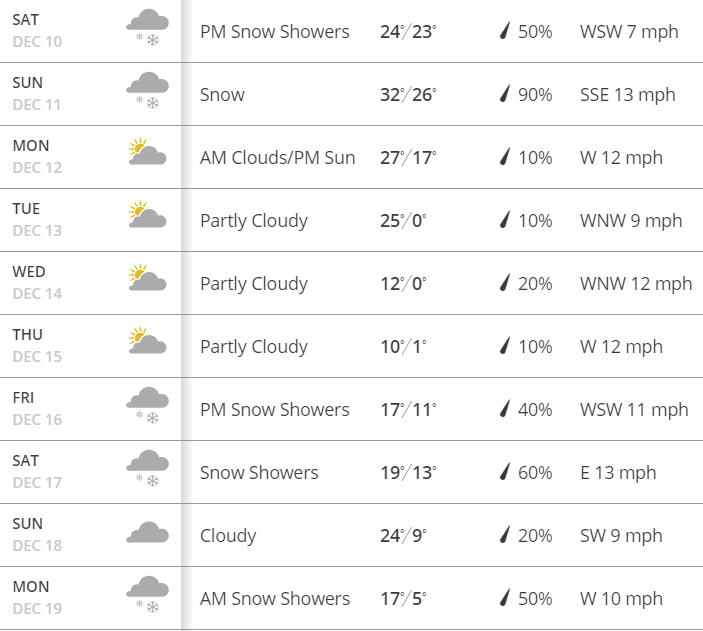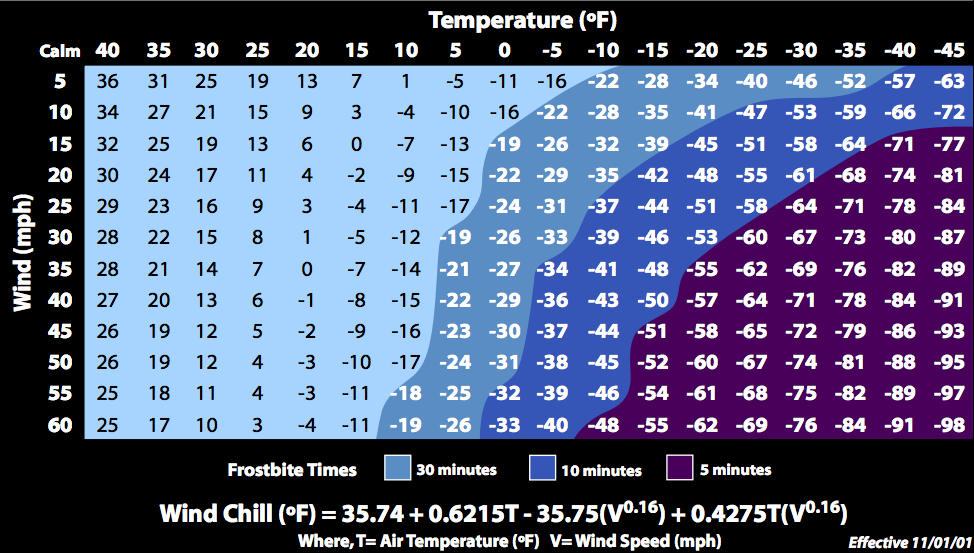Look Out for Old Man Winter! Here Comes the Wind Chill!
A few months ago, during the heat of the summer season, we told you about the Heat Index, or how hot it feels when the air temperature and humidity are combined.
Well, we are heading into the dead of winter, the mercury is plunging and it is time to meet the frigid cousin of the Heat Index: the Wind Chill Factor. And it might be the right time to think about wind chill considering the forecast for the next week…

(Admit it, your teeth started chattering the moment you looked at that forecast…and they are now calling for 4-8" of snow over the weekend.)
What is it...?
The windchill temperature is how cold people and animals feel when outside. Where the Heat Index is based on a combination of temperature and humidity, the Windchill Factor is based on the rate in which heat is lost from exposed skin caused by the combination of wind and cold.
There is a thin layer of air next to exposed skin that helps to keep heat next to the skin and insulate the body. As the wind increases, it blows that layer of air way from the skin and exposes it to the cold, drawing heat from the body, in turn driving down skin temperature and eventually the internal body temperature.
The end result is the wind makes it FEEL much colder than the air temperature(hence the 'real feel' term on your weather app). Prolonged exposure to such conditions can lead to hypothermia and frostbite.

How do I read it?
If we look at the chart above and the temperature is 0°F and the wind is blowing at 15 mph, the windchill is -19°F. At this windchill temperature, frostbite can occur in 15 minutes and exposed skin can freeze in 30 minutes. The lower the windchill, the less time it takes for frostbite to set in.
But even with bitterly cold windchills, you can still get in your daily run outdoors if you take the right precautions to protect yourself from the effects of a severe windchill.
- When you must go outside, wear several layers. Your first layer should be a skin-tight fitting baselayer. The next few layers can be looser-fitting, lightweight, warm clothing. Trapped air between the layers will insulate you. Remove layers to avoid sweating and chill.
- Avoid cotton at all costs! Cotton will hold moisture and increase heat-loss. Wear baselayers with fabrics – such as merino wool – that wick moisture away from the body.
- Wear running shoes that are either waterproof or have a water-resistant upper. The Saucony Winterized Collection and the Nike Shield Collection provide protection against the elements.
- Outer garments should be made of a technical fabric. This means that the fabric is tightly woven, water repellent and hooded. The North Face, Nike, New Balance, and Sugoi makes some great options.
- Wear a hat because much of your body heat can be lost from your head. Plus, if you don't, your ears will be exposed and especially susceptible to frostbite.
- Cover your mouth to protect your lungs from extreme cold.
- Mittens, snug at the wrist, are better than gloves.
- If possible start your run heading into the wind, then you’ll have the wind behind you on your return.
And don’t worry, winter can’t last forever…
Connect With Us
see the latest from Fleet Feet Chicago